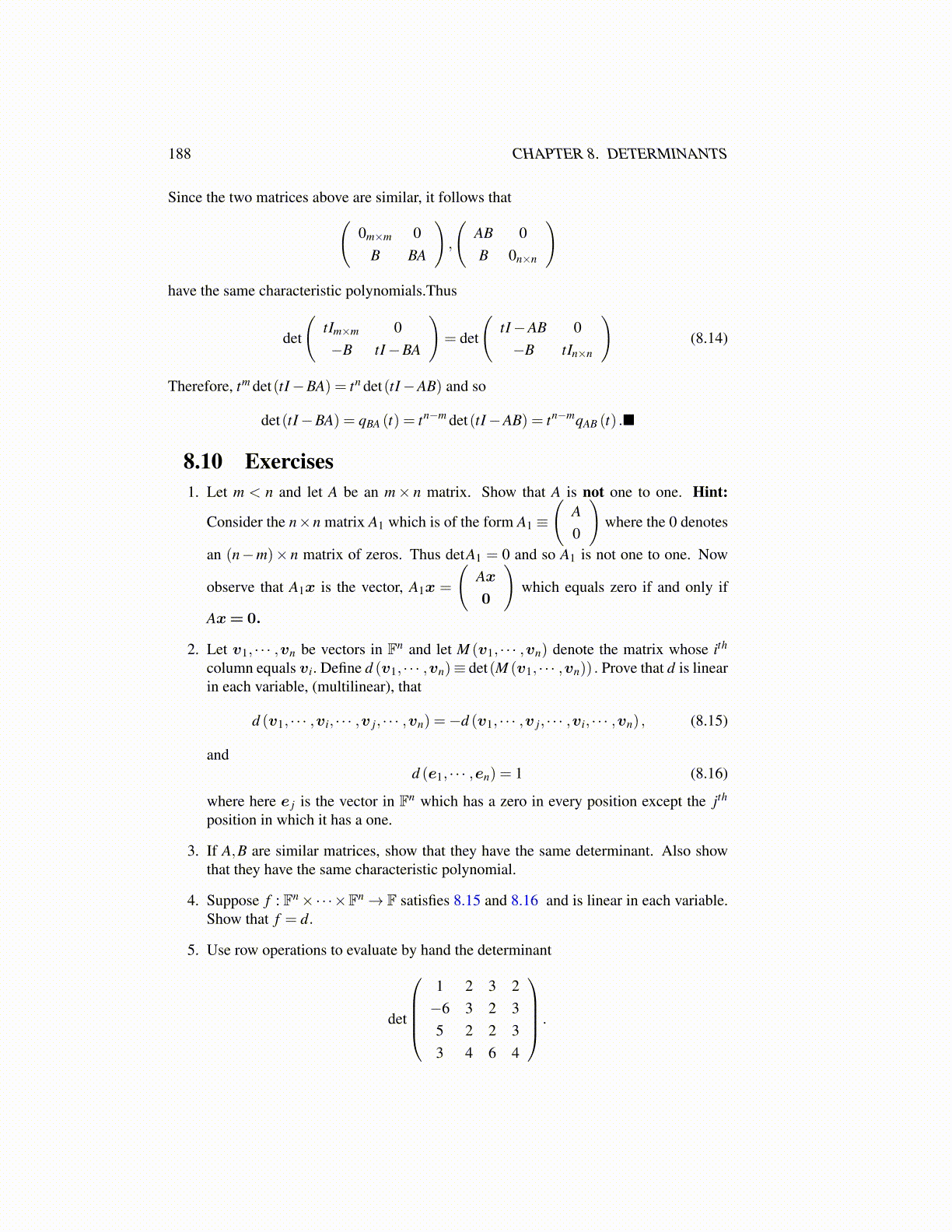
188 CHAPTER 8. DETERMINANTS
Since the two matrices above are similar, it follows that(0m×m 0
B BA
),
(AB 0B 0n×n
)
have the same characteristic polynomials.Thus
det
(tIm×m 0−B tI−BA
)= det
(tI−AB 0−B tIn×n
)(8.14)
Therefore, tm det(tI−BA) = tn det(tI−AB) and so
det(tI−BA) = qBA (t) = tn−m det(tI−AB) = tn−mqAB (t) .■
8.10 Exercises1. Let m < n and let A be an m× n matrix. Show that A is not one to one. Hint:
Consider the n×n matrix A1 which is of the form A1 ≡
(A0
)where the 0 denotes
an (n−m)× n matrix of zeros. Thus detA1 = 0 and so A1 is not one to one. Now
observe that A1x is the vector, A1x =
(Ax0
)which equals zero if and only if
Ax= 0.
2. Let v1, · · · ,vn be vectors in Fn and let M (v1, · · · ,vn) denote the matrix whose ith
column equals vi. Define d (v1, · · · ,vn)≡ det(M (v1, · · · ,vn)) . Prove that d is linearin each variable, (multilinear), that
d (v1, · · · ,vi, · · · ,v j, · · · ,vn) =−d (v1, · · · ,v j, · · · ,vi, · · · ,vn) , (8.15)
andd (e1, · · · ,en) = 1 (8.16)
where here e j is the vector in Fn which has a zero in every position except the jth
position in which it has a one.
3. If A,B are similar matrices, show that they have the same determinant. Also showthat they have the same characteristic polynomial.
4. Suppose f : Fn×·· ·×Fn→ F satisfies 8.15 and 8.16 and is linear in each variable.Show that f = d.
5. Use row operations to evaluate by hand the determinant
det
1 2 3 2−6 3 2 35 2 2 33 4 6 4
.